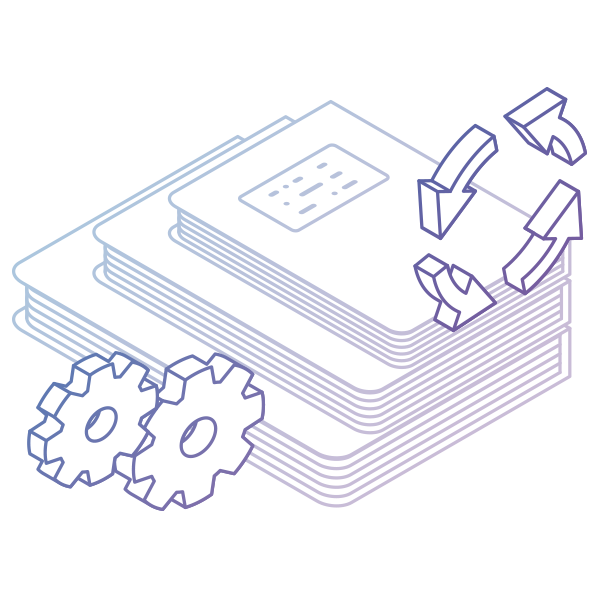Kaizen is an effective approach that promotes continuous improvement, emphasizing the significance of incremental positive changes. This approach is based on cooperation and commitment, in contrast to radical or top-down changes that may cause disruptions. Kaizen is integral to Lean Manufacturing and the Toyota Way and was originally designed to reduce defects, eliminate waste, enhance productivity, encourage worker responsibility and accountability, and foster innovation in the manufacturing industry.

What Is Kaizen: Meaning and Definition
Kaizen is a Japanese word meaning "change for better." And the original meaning of the Japanese word "Kaizen" from the Shogakukan Dictionary could be literally translated as "The act of making bad points better."
While that is true, there is much more to it. Regardless of what you might have heard before, continuous improvement is not the sole definition of Kaizen. Instead, it is the result of it. In fact, the literal translation of continuous improvement in Japanese is "Kairyo".
Kaizen is more of an internal process that happens within your own mind. The goal is to realize your potential, break the status quo, and, this way, achieve improvement. With that being said, a more precise way to define Kaizen would be "continuous self-development."
Actually, the modern sense of the word originated in Toyota factories. After WW2, many Japanese businesses were influenced by the methodologies brought by American advisors sent as part of the Marshall Plan.
Although this practice was implemented elsewhere, Toyota is the brightest example of a company that made an excellent practice of continuous improvement, creating effective management systems to generate, capture, and review improvements in never-ending cycles.
Toyota’s overall system of techniques for production management is called the Toyota Production System (TPS). The system rests upon several core principles, one of which is labeled Kaizen.
For Toyota’s usage (or generally, any manufacturing usage), it largely means continuous improvement through the act of self-development. Kaizen became one of the core practices behind Lean manufacturing in the USA and later in Lean management.
Nowadays, in the modern dynamic and unsafe business environment, more and more companies are on the way to becoming more efficient by applying Lean Thinking. A crucial part of it is the Kaizen culture.
Kaizen Philosophy and Culture in Practice
To achieve Kaizen, you need to adopt the practice of self-criticism. In Japanese, that practice is known as "Hansei." This means that you need to hold yourself accountable and find room for improvement, even if everything is going according to plan.
Adopting this type of mindset will give you the ability to break the status quo and push yourself to the limits. While positive thinking will show you everything as a success, it is the negative emotion of "it could’ve been better" that will give you the motivation to improve and eventually conquer new peaks continuously.
For example, in the Toyota production system, all line personnel is expected to stop the moving production line in case an abnormality occurs. Then, the staff, alongside their supervisors, suggest an option to resolve the abnormality.
Furthermore, when the project ends, a Hansei-kai (reflection meeting) is held to analyze the entire process, including any abnormalities that have occurred. Here, it is important to mention that a Hansei-kai process would happen even if the project were finished successfully, with no issues found along its lifecycle.
These approaches initiate Kaizen and usually deliver small improvements during the process and at the end of it. As a result, the culture of continually aligned small enhancements and standardization leads to significant overall productivity improvement changes.

Image credit: Jun Nakamuro
The developed Kaizen methodology includes making changes and monitoring results, then adjusting. Large-scale planning and extensive project scheduling are replaced by smaller experiments, which can be quickly adjusted when new improvements are suggested.
How Does Kaizen Work?
The Kaizen philosophy is rooted in the idea that improvement is a constant pursuit and there is always room for growth. Moreover, it upholds the principle of Respect for People. The Kaizen approach involves identifying areas for improvement, finding effective solutions, and implementing them. Furthermore, the process is iterative, and any issues that are not adequately resolved are revisited in subsequent cycles. A seven-step cycle can be employed to facilitate continuous improvement, providing a structured methodology for executing this process.
The 7-Step Kaizen Process (Cycle) for Continuous Improvement
The implementation of Kaizen can be accomplished through a seven-step cycle that aims to establish a culture of continuous improvement. The process involves the following steps:
1. Foster employee involvement. Encourage the participation of employees by empowering them to identify issues and problems. This approach generates a sense of ownership in the change process. Often, this is achieved by creating specific teams responsible for collecting and sharing information throughout the organization.
2. Identify problems. Utilize feedback from all employees to identify areas that require improvement or present potential opportunities. If there are multiple issues, create a comprehensive list to address each one systematically.
3. Develop a strategic solution. Foster a culture of innovation by encouraging employees to generate creative ideas. Evaluate all ideas, and select one or more winning solutions to implement.
4. Pilot the solution. Involve all stakeholders in the implementation of the chosen solution, and initiate pilot programs or other small-scale tests to assess its effectiveness.
5. Evaluate the outcomes. Regularly monitor progress and engage ground-level workers to ensure their continued involvement. Evaluate the success of the implemented change and identify opportunities for improvement.
6. In the event of positive outcomes, it is recommended to implement the solution organization-wide.
7. It is advisable to continuously repeat these seven steps to test new solutions as needed or address new problem lists.
Kaizen Event: Meaning and Example
A Kaizen Event, also known as a "Kaizen blitz", is a purposeful, time-limited initiative designed to facilitate an efficient brainstorming session focused on a single problem and enhancing an existing process.
Aligned with the principles of Lean and Six Sigma, a Kaizen еvent is centered on the concepts of focus and speed. Organizations can achieve significant breakthroughs that lead to swift process improvements by assembling an appropriate team to address a particular issue.
Typically, a Kaizen Event spans three to five days. Despite its brevity, this approach should be incorporated into a business's long-term process improvement plans as a regular practice.
A common process for a Kaizen event typically involves the following steps:
1. Establish clear objectives and provide relevant context.
2. Evaluate the current state and devise a plan for making enhancements.
3. Implement the identified improvements.
4. Analyze the results and address any issues that arise.
5. Present the outcomes and identify any required follow-up actions.
This type of Kaizen process cycle is commonly known as PDCA (Plan, Do, Check, and Act) and is widely used to improve business operations. This approach brings a scientific and methodical approach to making enhancements and achieving desired outcomes.
- PLAN: Plan your improvements, including setting goals.
- DO: Put in place the actions required for improvement.
- CHECK: Measure your success relative to your baseline.
- ACT: Adjust or tweak your changes.

As you progress through each step, you keep the wheel moving, representing continuous improvement. When you arrive again at your baseline stage, you consider your previous developments and plan the next ones.
But remember, this is just the result of Kaizen. Continuous improvement is the external force, but Kaizen is the internal force that drives you to improve regularly and question the status quo.
What Are the 10 Principles of Kaizen?
The successful execution of the Kaizen philosophy requires fostering the appropriate mindset throughout an organization. To address this, ten principles that embody the Kaizen mindset have emerged as central to the philosophy. These principles include:
1. Abandoning preconceptions.
2. Taking initiative in problem-solving.
3. Rejecting the status quo.
4. Embracing a mindset of iterative, adaptable change instead of striving for perfection.
5. Viewing mistakes as opportunities for solutions.
6. Creating an inclusive environment where all employees feel empowered to contribute.
7. Challenging apparent issues by asking "why" five times to ensure a proper root cause analysis.
8. Gathering information and perspectives from multiple sources.
9. Using creativity to identify low-cost, incremental improvements.
10. Never stop continuously improving.
What Are the Advantages and Disadvantages of Kaizen?
There are numerous advantages of implementing Kaizen in an organization. Nevertheless, it is important to acknowledge that there are certain scenarios where it may not be the most fitting approach. Below are some of the advantages and disadvantages of implementing Kaizen:
The Advantages of Kaizen:
1. Kaizen helps everyone to speak the same language: Small continual changes and standardization almost automatically take everyone on the same page. Employees are part of the process and its creation, improving themselves along with it.
2. Kaizen creates a growth mindset: Company values come between the most important components of a successful business. Kaizen is a way to unite everyone among them by sharing the same mindset and approach toward work and development
3. Kaizen increases motivation: Team members are motivated to engage and improve when they see that they are part of the change. When they see their small ideas incorporated into a process of continuous improvement, they are more eager to keep up and contribute.
4. Kaizen helps you to better acceptance of new ideas: When your organization is used to accepting the status quo, new ideas and opportunities can sometimes be seen negatively. With a continuous improvement strategy deployed, your teams will get used to and appreciate working with the notion that change is positive.
The Disadvantages of Kaizen:
1. Organizations characterized by limited communication may benefit from prioritizing cultural transformations first to foster a more open and collaborative environment.
2. Kaizen events that prioritize short-term objectives may generate a wave of enthusiasm that does not endure over time and, therefore, fails to yield long-lasting results.
Kaizen Frequently Asked Questions (FAQ)
What Is an Example of Kaizen?
Toyota and Ford are notable examples of companies that have successfully implemented Кaizen principles to improve their operations. Toyota, in particular, has sustained its success by consistently applying Кaizen. Similarly, Ford has effectively utilized Кaizen to streamline their manufacturing processes and reduce production time. These companies serve as excellent models for the benefits of incorporating Кaizen into organizational strategy.
What Are the Main Tools of Kaizen?
Kaizen applies various continuous improvement tools depending on the objective at hand. One example is the 5S tool, which is commonly utilized in Lean Manufacturing to enhance workplace efficiency, productivity, and safety. JIT and Kanban are employed in inventory control, manufacturing, and project management. The five whys method (what, when, where, why, and who) is used to identify the root cause of a problem. Fishbone diagrams and tables are often used for visualizing the problem's root causes. Value stream mapping is an analytical tool that enables the identification of areas to eliminate waste. Follow-up events are tools utilized to maintain and sustain improvements.
We offer the most flexible software platform
for outcome-driven enterprise agility.
In Summary
The secret of Toyota’s success story has put the beginning of the Kaizen culture of self-development and eventually continuous improvement. The methodology is easy to implement within every professional or personal scenario, which makes it one of the most famous practices nowadays. So what we learned about it so far?
- Regardless of what the popular belief is, "Kairyo" is the literal translation of continuous improvement while Kaizen is better defined as "continuous self-development."
- To achieve Kaizen, you need to develop a mindset of self-criticism, reflect on what you have achieved so far and always look for the next highest peak to conquer.
- The cycle of kaizen activity: "Plan >> Do >> Check >> Act."
- Establishing Kaizen culture is a continuous process.










